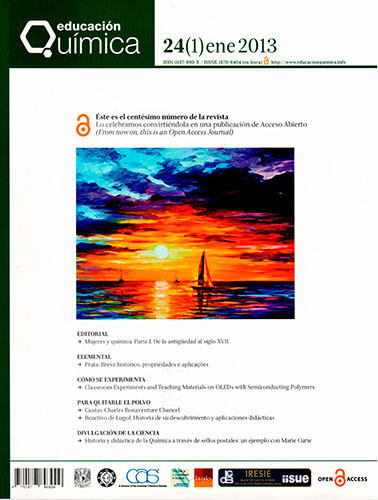Mujeres y química Parte I. De la antigüedad al siglo XVII
Main Article Content
Abstract
Women and Chemistry. Part I. From Antiquity to seventeenth century)
Little has been written about the exquisite passion of discovering. This has been the main driving force of the greatest scientists — with the masculine gender — that have been in the world. But what happened with the participation of women? Does science have male gender? It seems it has, but although a careful examination of history reveals not equity, there is certainly an active participation of women in the field of science, despite the open hostility of the majority of their contemporary men.
In this editorial we will take a brief walk through the lives of some of the first of them, from BC, until the seventeenth century. We will start with Tapputi, perhaps the first performer of pharmacy, after her we will deal with some alchemists of the early centuries of our era, as Cleopatra and Mary the Jewess, and then we will move to later alchemists, as Isabella Cortese and Mary Sydney Herbert. We will finish with Marie le Jars de Gournay, Margaret Cavendish and Marie Meurdrac, women living before the arrival of modern chemistry with Lavoisier and his wife Marie Anne, that will be the topic of the second part of this study. Marie Meurdrac published the opus La chymie charitable et facile en faveur des dames, a milestone, being the first work devoted to chemistry for women written by a woman. Her recipes are still used today in beauty parlors.
Article Details
Citas en Dimensions Service

Educación Química por Universidad Nacional Autónoma de México se distribuye bajo una Licencia Creative Commons Atribución-NoComercial-SinDerivar 4.0 Internacional.
Basada en una obra en http://www.revistas.unam.mx/index.php/req.




